The last thing you want on a hot summer’s day is to feel warm air coming from your AC.
So what’s causing your central air conditioner to blow warm air?
Well, the following reasons could explain why warm air is coming from your vents:
- Your thermostat is set to heat mode
- Your air filter is dirty
- Your outdoor unit is not getting power or it’s dirty
- You have a refrigerant leak
- Your evaporator coil is dirty
- You have leaky or disconnected ducts
Luckily, you can troubleshoot a few of those problems yourself before you call a pro. So we’ll divide the issues based on:
- Warm-air problems you can fix
- Warm-air problems a professional needs to fix
Let’s start with the issues you can fix…
Need a pro to fix your AC?
Learn more about our AC repair services, or...
Warm-air problems you can fix
For this section, we’ll break it down step by step to troubleshoot the air conditioner problems you can fix:
- Your thermostat is set to heat mode
- Your outdoor unit is not getting power or it’s dirty
If at any point you get stuck, contact a professional.
Step #1: Make sure your thermostat is set to COOL
It’s silly, we know—but make sure your thermostat is set to COOL and not HEAT. With some thermostat models it’s easy to accidentally toggle the switch too far, which could explain why you’re getting warm air instead of cold air.
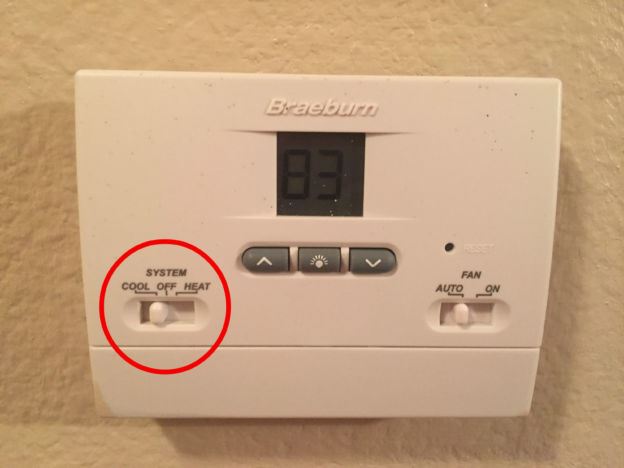
Make sure your thermostat is set to COOL
Step #2: Look at your air filter
Next, you’ll want to take a look at your air filter. A dirty air filter can block airflow coming into your system. If not enough air enters your system, the evaporator coil—the part that uses refrigerant to remove heat from your home’s air—could freeze over.
When the evaporator coil freezes over, it reduces the ability of the refrigerant to remove warmth from your home’s air—which means your AC is sucking in warm air and pushing warm air back into your home.
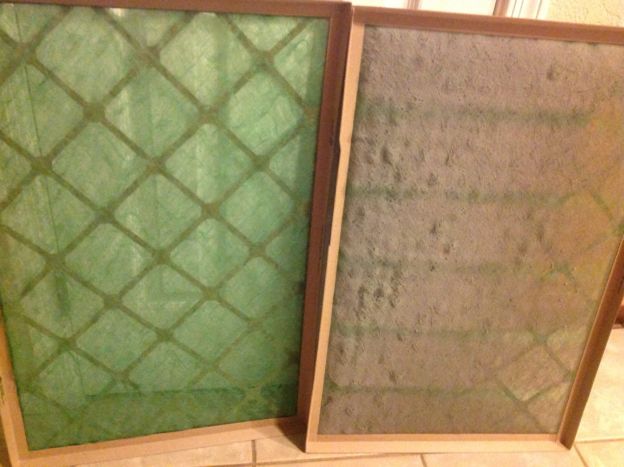
Clean vs. dirty air filter
So do this: Check your air filter. If your air filter looks like the one on the right, it’s dirty and it’s time to replace it.
Step #3: Check your outdoor unit
You’ll want to check 2 things on your outdoor unit:
1. Check that the outdoor unit is receiving electrical power. If your outdoor unit isn’t getting power, your compressor (that part that runs refrigerant through your system to cool the air coming into your home) won’t work, which explains the warm air coming from your vents.
An outdoor unit can lose electrical power in 2 places:
- The circuit breaker: Sometimes older air conditioners draw too much power when they start up, which causes the circuit breaker to trip. Check the circuit breaker for your AC at the electrical panel. If it has tripped, reset it. But if it keeps tripping after you reset it, don’t keep resetting it—contact a professional for help.
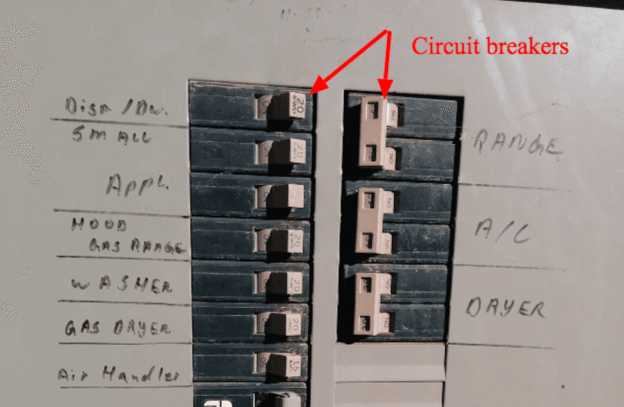
Circuit breakers on an electrical panel.
- The AC disconnect switch: This switch is usually located on your home’s exterior wall, near the outside AC unit. Sometimes this switch can accidentally get switched off, which cuts power to the outdoor unit. Make sure it’s switched ON.
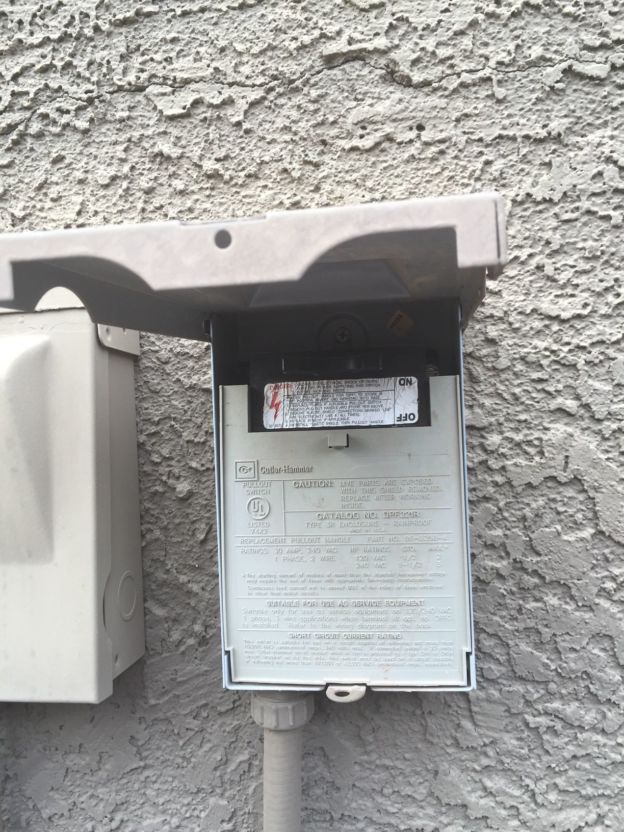
The AC disconnect switch, found near your outdoor unit
2. Make sure your outdoor unit is clear of debris. Your outdoor unit’s job is to take the heat collected from your home’s warm air and dump it outside. But if the outdoor unit is dirty, your AC can’t dump heat as well, which means you’ll feel warmer air inside.
To clear debris from your outdoor unit, follow these steps:
- Go to the AC disconnect switch and turn off the power (just while you clean).
- Pick out debris from your outside unit. If you see clumps of dirt or you can’t remove the debris by hand you may need to use a wet/dry vacuum to clear the debris.
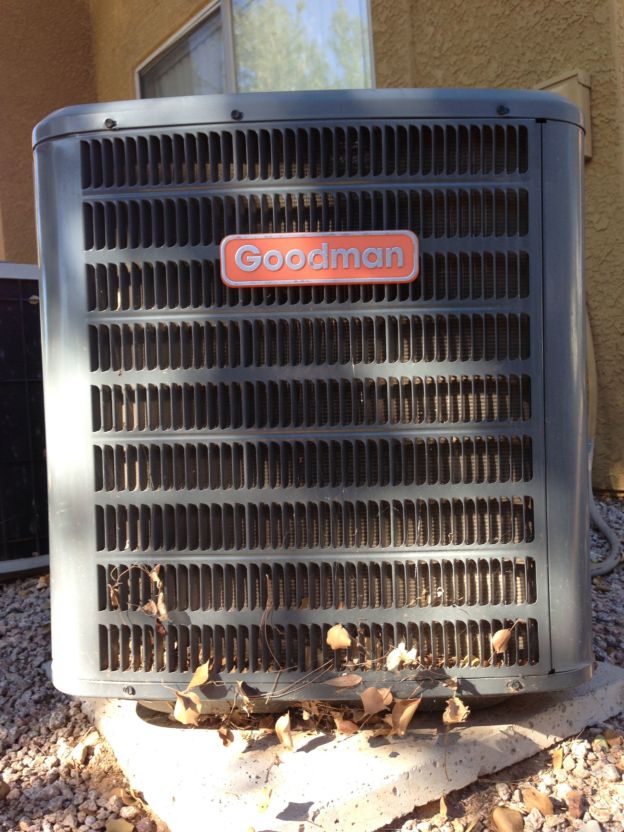
A dirty outdoor condenser unit.
- Wash the outside unit with a hose sprayer on medium power (don’t use high power as that could damage the coils).
- Make sure all surrounding plants are at least 3 feet from the outdoor unit.
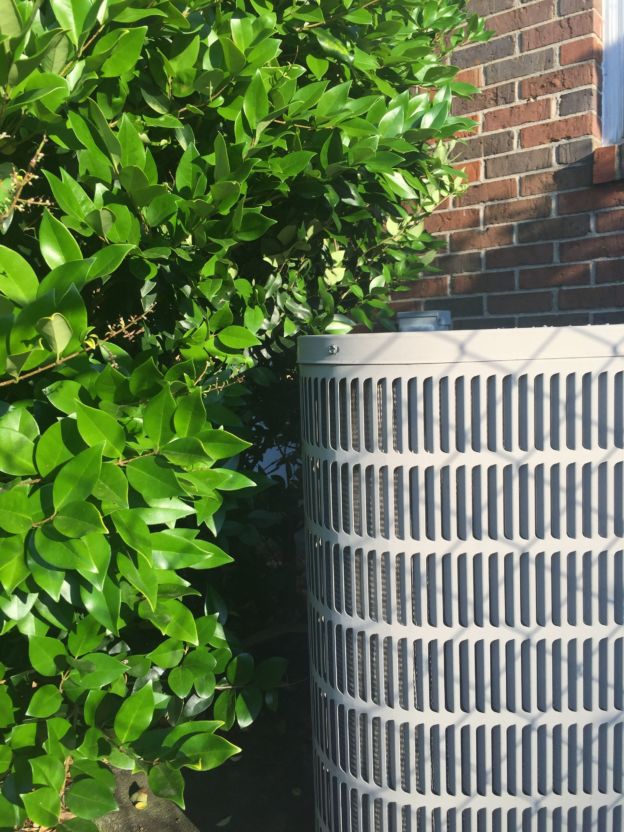
An example of plants growing too close to the outdoor unit.
Did these steps fix the problem? Great! If not, read on...
Warm-air problems a professional needs to fix
If the steps above didn’t help your warm-air problem, you’ll likely need a pro to fix one of the following problems:
- Dirty evaporator coil
- Refrigerant leak
- Leaky or disconnected ducts
Problem #1: Dirty evaporator coil
The evaporator coil (also called the A-frame coil) is a central component of your AC system. The purpose of the evaporator coil is to house the refrigerant, which is the liquid/gas that actually cools your home’s air.
If your evaporator coil is covered in dust (which can happen over time), that layer of dust acts like a barrier between the air and the refrigerant, which makes it harder to cool your home’s warm air.
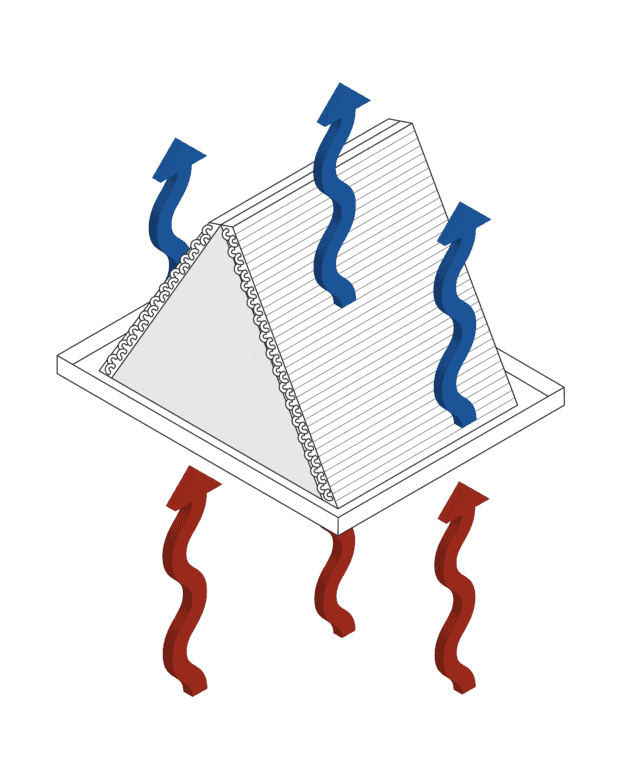
How a clean evaporator coil works: Hot air enters, gets cooled, then gets pushed back into your home.
Contact a professional to check if your evaporator coil is dirty. If it is dirty, they can carefully clean it with special tools.
- Besides warm air coming from your AC, other signs you have a dirty evaporator coil include:
- Clogged condensate drain
- Smell of mold
- Ice on your air conditioner (you’ll likely see pools of water around your indoor unit if this happens)
Problem #2: Low refrigerant levels—which means you have a refrigerant leak
Like we mentioned above, refrigerant is the substance that absorbs the heat and carries it outside. This process is what actually cools your home’s air.
So, it makes sense that if you don’t have enough refrigerant in your system, then the air coming out of your vents won’t be very cool.
Low refrigerant levels mean you have a leak somewhere. You see, your AC system doesn’t just “run out” of refrigerant—it runs in a closed loop in your system.
So, a professional will need to find the leak and then repair it. And since refrigerant can cause serious health problems, it’s always best to let a certified professional handle any refrigerant repairs.
Other signs you have a refrigerant leak include:
- A hissing/bubbling noise near the outdoor unit or the evaporator coil (indoors)
- Increased energy bills
- Ice on the evaporator coil
Problem #3: Leaky or disconnected air ducts
Leaks in your home’s ductwork allow warm air to mix with newly-conditioned (cool) air, which makes the air coming out of your vents warmer.
Contact an HVAC professional to inspect your ductwork and fix any leaks you may have.
Don’t be surprised if the professional finds leaks in your ductwork—according to EnergyStar, most homes have duct leaks and/or disconnected ducts.
Other signs you have leaky ducts include:
- Dust is blowing into your home from the vents
- You have higher energy bills
- Uneven cooling throughout your home
Need a San Marcos cooling tech to fix your air conditioning issue?
We’ll send over one of our techs to fix whatever is causing the warm-air issue so your AC can properly cool your home again.
To learn more about our cooling repair services, visit our AC service page.

